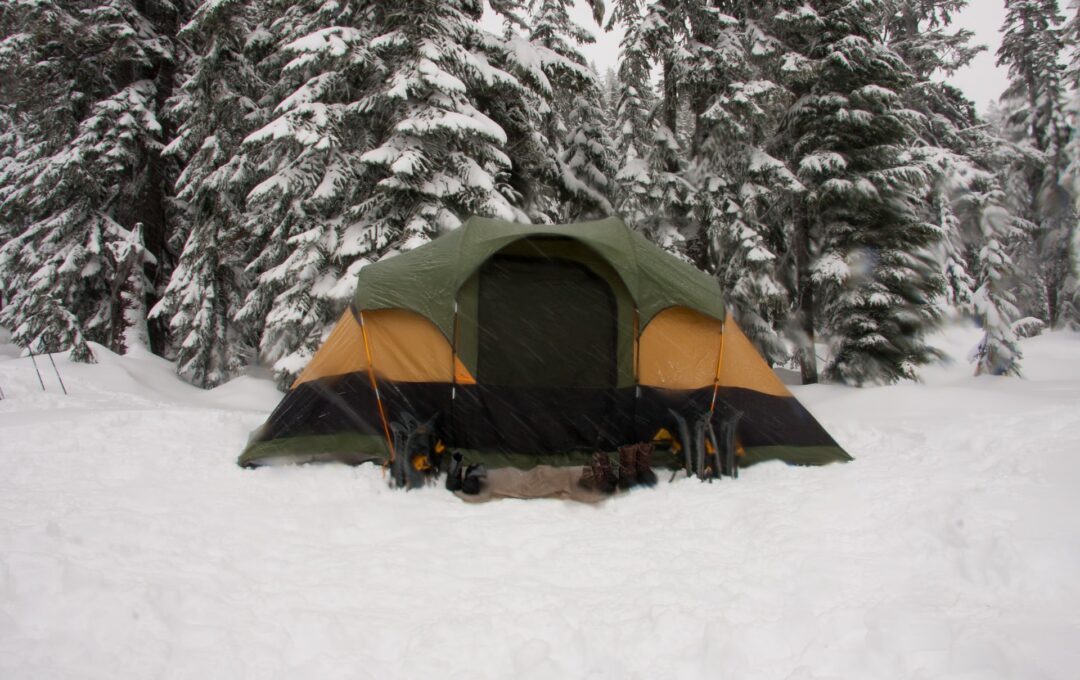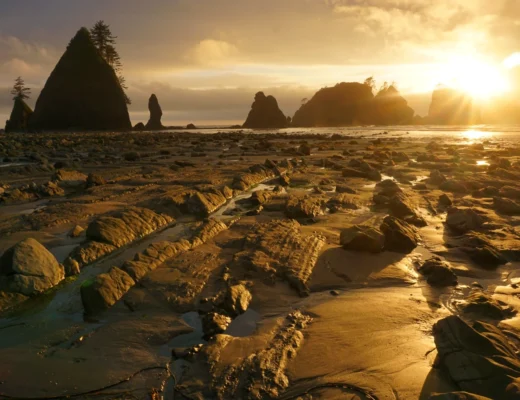While a winter camping escape is more daunting than going camping in the summer months, the experience can be much more rewarding. The memories are sure to last if you choose to go exploring the great outdoors during the cold winter months.
Still, getting started can be intimidating since the entry burden to winter camping is big. To make sure you’ll get outside safely this winter, check out this equipment guide.
Cold-Weather Sleeping Bag
After an exhausting day of hiking or snow-shoeing through never-ending whiteness, there’s nothing more rewarding than crawling into a cozy, well-insulated sleeping bag. You want to buy a winter-specific camping bag. Go for high-quality outdoor brands such as Western Mountaineering or Mountain Hardwear.
If the conditions are really harsh, get a sleeping bag that is rated for temperatures around 0°F or below. But, when it comes to mild winters, a sleeping bag rated for 20°F should be warm enough.
Since you will be carrying quite a lot of gear, do what you can to lighten the load. Every ounce counts.
It’s best to get a sleeping bag that features 800 to 900-fill-power down. Sleeping bags that use high-fill-power down don’t need that much insulation material to provide warmth, so they are usually lighter.
Insulated Sleeping Pad
To make sure you will stay warm at night, bring an insulated sleeping pad. It will serve as a buffer between the freezing ground and your sleeping bag.
For winter camping expeditions, choose a pad with a high R-value. The R-value tells us about a pad’s ability to retain heat. The higher the R-value, the better the pad. An R-value of 4 should be good enough for cold conditions. If you are expecting extremely cold weather, consider getting a pad with an R-value of 7.
4-Season Tent

Winter brings heavy precipitation and storms in addition to freezing temperatures. To ensure you will be protected from the elements, it’s best to get a 4-season tent.
A high-quality tent is a big investment, so the most cost-efficient solution is to get a versatile model.
A high-quality insulated tent is great for summer camping and music festivals as well as sub-freezing temperatures and extreme weather conditions. It is both breathable and thermally insulated, so you’ll never feel too hot or too cold.
While high-quality sleeping gear will make your nights in the great outdoors much more comfortable, you also need to consider what you will be doing while you’re lounging in your tent.
Days are shorter in the winter, so you will be spending a good amount of time in your sleeping bag. To help you and your friends pass the time, plan on bringing games, books, and other activities.
Stove and Fuel
During high-output days, meals are very important. Your body is working even harder to keep you warm when the weather is particularly cold. Because of this, a stove is a vital piece of equipment for every winter camping adventure.
A reliable stove will stand up to harsh winter elements. You will need a model with a remote canister that can be inverted or a liquid-fuel stove for truly frigid temperatures.
All-in-one canister stoves are very easy to use. After you snap everything into place, a stove will boil water very quickly.
It takes more stove time to prepare a meal when you’re camping in the winter since you’ll be melting snow to make water. So, make sure to bring enough fuel.
If you are going camping with just one campmate, an 8-ounce propane/isobutane canister will be enough for a couple of days. Alternatively, you can bring half a liter of white gas for each day in the wilderness.
Cooking on solid dirt or rock is much easier than using a camp stove in the snow. For instance, a liquid-fuel stove can quickly melt the snow underneath it.
It’s easier to cook on an even and stable surface, so bring a platform for your stove. You don’t need anything fancy. Simply cut a foam square and wrap it in aluminum foil.
First Aid Kit
You can’t go on a winter camping or hiking trip without a first aid kit. If something were to go wrong, a well-stocked first-aid kit could potentially save your life. Even a small issue can become a major health incident.
You can buy a pre-packaged first aid kit or you can make one yourself. If you are not sure what to put in your first aid kit, Mayo Clinic’s checklist can be of great help.
At the very least, your kit should contain bandages, band-aids, duct tape, and basic medications. Even if you buy a pre-packaged first aid kit, you can easily customize it to your needs.
Shovel
If any of your friends get stuck in an avalanche, you will need a shovel to free them. Additionally, you can use a small packable shower to build up a wind barrier, excavate a place for your tent, and even create a snow kitchen.
Choose a shovel that is tough enough to chop through rock hard-ice, but also compact and lightweight enough to fit into your backpack.
Navigation

Snow tends to change the appearance and shape of the landscape, so route-finding can be challenging. To double-check your location, it’s best to carry a GPS as well as a topographic map.
You can also download an app such as Topo Maps or Gaia to your phone. Navigation apps can provide offline-map viewing and help you track the route. That said, make sure to keep your phone close to your warm body. Cold temperatures can kill a phone’s battery very quickly.
Beacon and Probe
As you travel into potential avalanche terrain, you should have a transceiver, otherwise called a beacon, strapped to your torso.
If you were to get caught, it would send out a signal. A beacon makes it easier for your friends and emergency services to find you, expediting the rescue.
If someone gets buried under snow, a probe will help you find their exact location. Probes are also great for assessing snowpack and measuring total snow depth.
Poles
A pair of poles will be of great use on your winter camping trip. Choose trekking poles that have large powder baskets. As you push down, the powder baskets will prevent the poles from sinking all the way.



